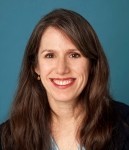24 May Neighborhood Parks Need Programs and Outreach to Optimize Use
MedicalResearch.com Interview with:

Dr. Deborah Cohen
Deborah A. Cohen, MD, MPH
RAND Corporation
Santa Monica, CA 90407
MedicalResearch.com: What is the background for this study?
Dr. Cohen: An extensive infrastructure of neighborhood parks supports leisure time physical activity in most U.S. cities; yet, most Americans do not meet national guidelines for physical activity. Neighborhood parks have never been assessed nationally to identify their role in physical activity. We visited a representative sample of 174 parks in 25 cities across the United States and assessed their use as well as local park management policies.
MedicalResearch.com: What are the main findings?
Dr. Cohen: We found that nationwide, the average neighborhood park of 8.8 acres averaged 20 users/hour or an estimated 1,533 person hours of weekly use. Park use was higher in parks that were larger and had more facilities and that were in neighborhoods with a higher population density and lower percentage of households in poverty. Walking loops and gymnasia each generated 221 hours/week of moderate to vigorous physical activity. Seniors represented 4% of park users, but 20% of the general population. Programming and marketing were associated with 37% and 63% more hours of moderate to vigorous physical activity/week in parks, respectively.
The lower use of parks in low-income than in high-income neighborhoods was largely explained by fewer supervised activities and marketing/outreach efforts.
MedicalResearch.com: What should readers take away from your report?
Dr. Cohen: Neighborhood parks have an immense potential to support population physical activity, which is currently inadequate among most Americans. However, the mere presence of a park does not guarantee its use, even when many facilities are usable. This study identified multiple disparities in park use, especially low use among adults, seniors, girls, and women and lower use in higher-poverty neighborhoods. Parks are not adequately serving seniors, adults, and females of all ages.
MedicalResearch.com: What recommendations do you have for future research as a result of this study?
Dr. Cohen: Given that physical activity may have more immediate benefits for adults and seniors as far as preventing or mitigating the impact of chronic diseases, park systems should consider adding enhancements, like walking loops and more programming that would appeal to older age groups. Disparities in these neighborhood park use might be overcome by offering more supervised activities and engaging in greater marketing/outreach efforts.
MedicalResearch.com: Is there anything else you would like to add?
Dr. Cohen: The current investment in urban parks across the US is relatively small, considering the potential benefits they may yield in health. Physical inactivity contributes to a high proportion of chronic diseases and is directly responsible for 11% of all deaths. Yet among the 100 largest US cities, the average annual per capita expenditure for parks in 2013 was $73 (range $9-$247), less than 0.8% of the $9,146 per capita expenditure on health care in the same year. Neighborhood parks are challenged by being financed at the local level, although limited federal dollars are sometimes available through Community Development Block Grants and the Land and Water Conservation Fund. Private philanthropy can help, although it rarely occurs in lower-income neighborhoods. Relatively modest investments may improve neighborhood park conditions to make them conducive to physical activity for everyone, regardless of age, gender, or income-level.
MedicalResearch.com: Thank you for your contribution to the MedicalResearch.com community.
Citation:
The First National Study of Neighborhood Parks
Cohen, Deborah A. et al.
American Journal of Preventive Medicine , Volume 0 , Issue 0
Published Online:May 18, 2016
DOI: http://dx.doi.org/10.1016/j.amepre.2016.03.021
Note: Content is Not intended as medical advice. Please consult your health care provider regarding your specific medical condition and questions.
More Medical Research Interviews on MedicalResearch.com/
[wysija_form id=”5″]
Last Updated on May 24, 2016 by Marie Benz MD FAAD
